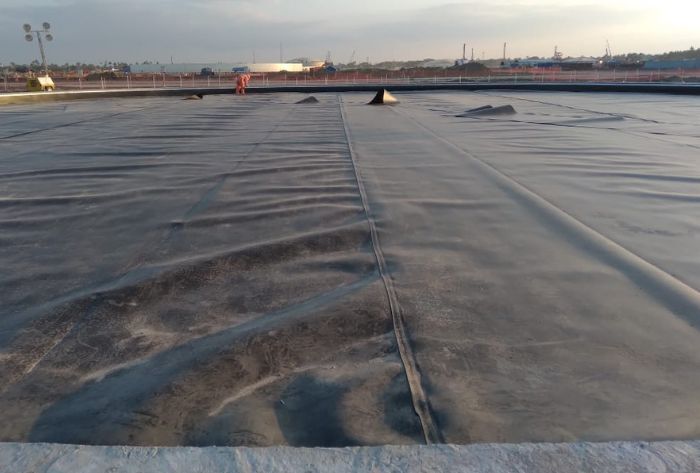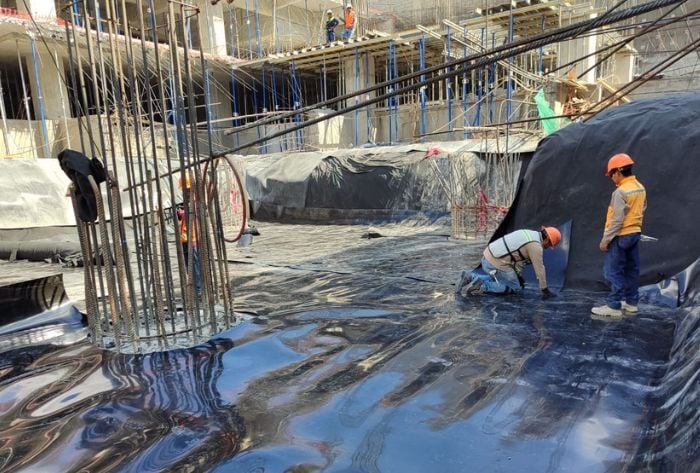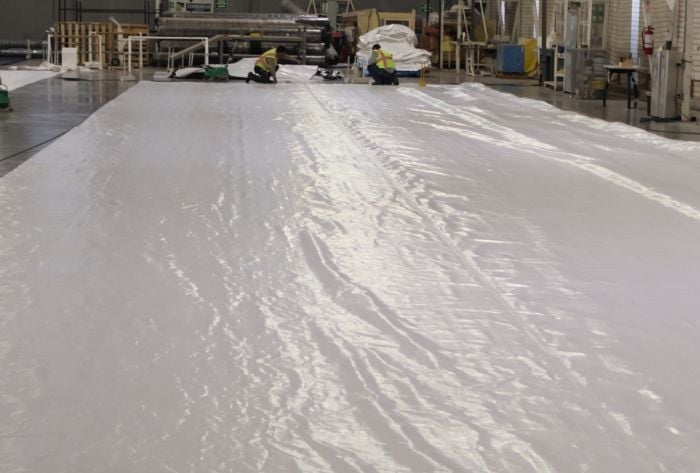A geomembrane lining can be installed on-site or prefabricated, which helps reduce installation times and labor costs.
Secondary Containment Solutions
We implement advanced solutions that function as secondary containment systems, minimizing environmental impact and strengthening operational efficiency.
What's a Secondary Containment System?
A secondary containment system is, as its name says, a secondary level of safety, that's used to capture leaks or spills from a primary containment, like a tank or pipe, to prevent hazardous materials from harming people or the environment.
Some of the secondary containments applications are:
-
Chemical Storage and Handling
-
Fuel and Oil Storage
-
Wastewater Treatment Plants
-
Power Generation Facilities
-
Manufacturing Plants

Why Choose a Secondary Containment System?
Hydrocarbons Protection
At SAI, we are leaders in the implementation of hydrocarbon protection and containment solutions. Our solutions are designed to provide maximum safety and efficiency in spill management and the storage of hazardous substances, helping protect the environment and comply with international safety standards.
✔️ Cutting-edge containment technology
✔️ Flexibility and adaptability
✔️ Regulatory compliance and sustainability
✔️ Comprehensive spill-management solutions
Foundations
Foundation lining is a specialized solution that involves applying a geomembrane layer over the foundation to protect it against the infiltration of liquids and chemicals. These geomembranes act as a barrier that prevents groundwater or contaminating liquids from affecting the integrity of the structure and its surroundings.
Geomembranes made from synthetic materials are highly resistant to extreme conditions and provide effective protection throughout the foundation’s service life.

Foundation Rings
Foundation rings are an innovative solution used for the foundation of storage tanks, silos, and other industrial structures. These rings are coated with an impermeable geomembrane that acts as a barrier against the leakage of liquids and chemicals, protecting both the ground and the surrounding environment.
-
Storage tanks for hydrocarbons and chemical products
-
Water treatment plants and liquid storage systems
-
Energy industry projects (power plants, pumping stations, etc.)
Would you like to protect your facility with a high quality secondary containment liner?
Contact us today for a free consultation and discover how our geomembrane solutions can benefit your operations.
Geomembranes
At SAI, we offer advanced secondary containment solutions using top-quality geomembranes. These linings are an excellent option for protecting structures and controlling liquid spills, especially in industrial projects that require environmental safety and operational efficiency.

Why Choose SAI?
Turnkey solutions
Inspection, materials and installation.
Certified personnel
Complete and specialized support on every phase of your infrastructure project.
+30 years of experience
Professional and precise installation that assures the integrity and durability of every project.
Compliance with regulations
Compliance with the most rigorous standards in quality, security and reliability.
Ready to Upgrade Your Containment Systems?
Protect your site, meet regulatory standards, and reduce long-term risk with engineered secondary containment solutions built to perform.



